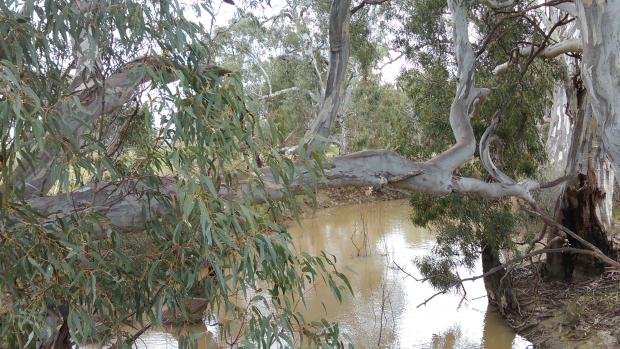Loading
It’s all about mood lighting and Barry White

When it comes to spring, there is a lot of talk about the birds and the bees. But there is another animal whose breeding patterns deserve to be just as celebrated – fish.
Sure, ‘canoodling cod’ or ‘petting perch’ doesn’t roll off the tongue as well, but in northern Victoria, frisky fish are just as important.
A century of regulation and the introduction of pest species have combined with a variable climate to change our rivers and impact our native fish populations.
Weirs have prevented fish from entering or leaving systems like the lower Loddon, to recolonise from the Murray River, complete spawning migrations, or respond to adverse conditions.
Fish are lost from natural rivers through irrigation channels and pumps, low or absent winter flows provide poor habitat at times when native fish need to build condition for spawning, and young fish born in the previous year need to hide from larger adult fish to make it through the winter.
On top of that, snags have been removed and livestock grazing on the river bank has removed bank groundcover and shrubby vegetation which causes erosion and reduced water quality.
Work is being done on the physical barriers to physical attraction, with the North Central Catchment Management Authority (CMA) and our project partners Goulburn-Murray Water installing fishways at weirsunder the Native Fish Recovery Program. The program is also improving habitat by putting snag piles into rivers, removing weeds and fencing off and revegetating river banks.
Now it’s the water’s turn, and time to build on the autumn flows that dispersed the fish to different areas.
“We will release water for the environment from the Loddon Weir on the Loddon River and from Box Creek regulator at Kow Swamp, with an aim to get about 700 megalitres a day of water over the Kerang Weir,” North Central CMA Environmental Water Manager Louissa Rogers said.
“The aim of these complex flows is to get fish moving, moving to breed.
“Most of them will swim up Pyramid and Box creek, through the fishway and into Kow Swamp.
“Kow Swamp is a great nursery where they can breed, lay eggs and know they will be as safe as they can be.
“Kow Swamp is full of nutrients, still water and lots of logs. This is perfect fish frolicking habitat.”
At the same time, about 120 ML a day for three days will flow down Serpentine Creek to encourage both fish and platypus to breed, and enhance their habitat.
“Higher, flowing water at this time of year is all the trigger our native fish and platypus need to realise it is breeding season,” Ms Rogers said.
“The fish will start following the smell of food coming out of Kow Swamp and the weirs, and the platypus will know it is time to build their nests.
“Water for the environment is not just about releasing water, it is about the right amount of water in the right place at the right time.”
The flows are in line with the Victorian Environmental Water Holder’s (VEWH) Seasonal Watering Plan 2016-17 and is developed in collaboration with the North Central CMA and supported by local input from community representatives, Goulburn-Murray Water and the Department Environment, Land, Water and Planning.
The VEWH Seasonal Watering Plan 2017-18 is available for download from www.vewh.vic.gov.au, with regular watering updates posted on the North Central CMA website www.nccma.vic.gov.au. For further information contact the North Central CMA on (03) 5448 712.
